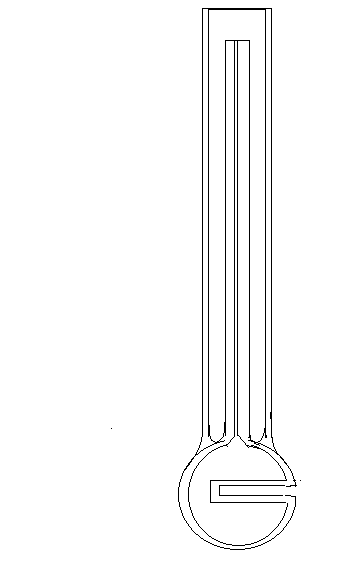|
CALORIMETER
IDEA
|
 |
| Central
Research at Varian Associates had several active LASER projects underway
in the early 1960s. One of
these involved a Light Emitting Diode (LED) with Sol Miller as the
principal investigator. I did not know any of the details, but Sol asked me to think
about an instrument capable of measuring small amounts of pulse energy.
After thinking about it for a day or so, it seemed intuitive to me
that a small amount of energy absorbed in a liquid would produce a small
change in the volume of the liquid without regard to how the energy was
distributed. I went to the
glass lathe and made several prototype devices illustrated in schematic
form above. I explained to
Sol that I would fill the main bulb with a black liquid through the
capillary by filling the outer tube to the top and alternately heating and
cooling the bulb to drive out all of the air.
Then I would fill the region between the outer protective tube and
the capillary with a clear liquid that would greatly reduce the reflected
light from those surfaces. The
top of the black liquid inside the capillary would be clearly visible
either directly or under a microscope if necessary.
The laser light would be directed into the reentrant device in the
main bulb and be absorbed by the liquid.
Some small effort might be required to make the entry point a
“black hole” and thus minimize any heat loss by reflection.
If Sol liked the idea, I could build any number of these devices in
short order and include a small resistor in the bulb for calibration
purposes. By discharging a
small capacitor through the resistor, a precisely known amount of energy
would be delivered into the liquid and the instrument could be considered
as a Primary device. Perhaps
2 or 3 of these instruments with calibrating resistors included were built
before my friend Ken Rogers came up with a far superior instrument even as
I was explaining to him how this one would work.
He reasoned that the resistance of a length of wire would change in
a precise way when the energy content was changed without regard to the
distribution of the energy. The resistor, a length of fine black copper wire, connected
as one leg of a bridge gave an electrical readout in a far simpler device
than my glass contraption. It
was a fun idea anyway. |
|
